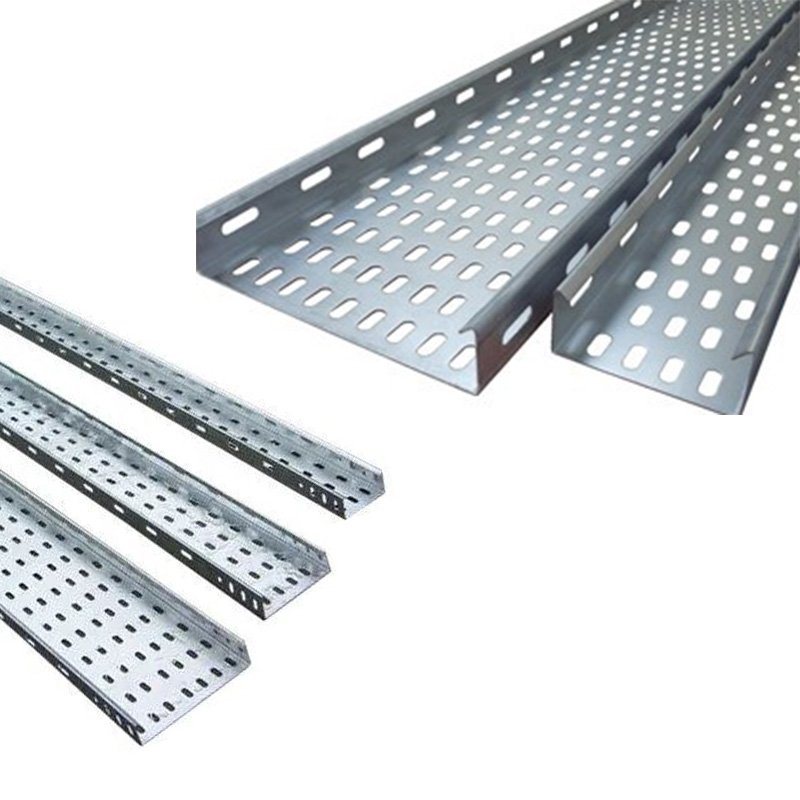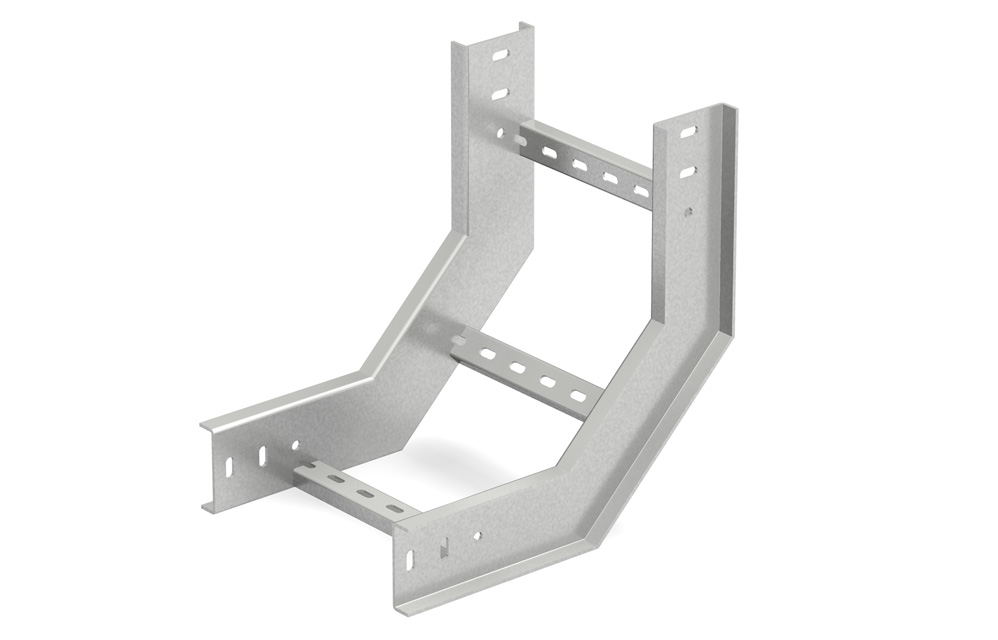Cable tray supports are an integral part of cable management systems, providing numerous advantages that contribute to the efficient, safe, and cost-effective organization of cables in various industrial, commercial, and residential settings. In this extensive article, we will delve deeper into the key benefits of using cable tray supports and explore how they impact the overall performance, reliability, and sustainability of cable installations.
Enhanced Cable Organization and Protection
One of the primary benefits of cable tray supports is their ability to facilitate optimal cable organization and protection. Cable tray supports ensure that cable trays remain securely suspended or mounted, preventing cables from sagging, kinking, or tangling due to improper support. This not only enhances the structural integrity of cable installations but also reduces the risk of electrical failures caused by physical stress on the cables.
Moreover, cable tray supports enable installers to position cable trays at appropriate heights and distances from potential sources of damage, such as water, chemicals, or mechanical impacts. By keeping cables off the ground and away from hazards, cable tray supports help prolong the lifespan of cables and minimize the need for frequent repairs or replacements.
To further enhance cable protection, cable tray supports can be designed with additional features like covers, ladders, and support brackets. These accessories help maintain proper spacing between cables, prevent abrasion, and ensure that cables are securely fastened within the tray.

Improved Safety and Compliance
Cable tray supports play a crucial role in improving safety in cable installations. They help prevent accidents, injuries, and electrical fires caused by loose or exposed wiring. By providing a structured and organized pathway for cables, cable tray supports minimize trip hazards and reduce the risk of electrocution or electrical shock.
Furthermore, cable tray supports are designed to comply with industry standards and regulations, ensuring that cable installations meet electrical codes and safety requirements. This compliance not only protects personnel but also safeguards businesses and organizations from potential legal liabilities and penalties associated with non-compliant installations.
Flexibility and Adaptability
Cable tray supports offer unparalleled flexibility and adaptability in cable management, making them suitable for a wide range of applications and environments. Supports can be designed for different types of cable trays, including solid bottom, ventilated, and perforated trays, depending on the specific needs of the installation.
Additionally, cable tray supports can accommodate a variety of load capacities, allowing them to handle heavy-duty cable installations or lightweight, low-voltage applications. This versatility makes cable tray supports ideal for use in diverse industries, such as power generation, telecommunications, data centers, manufacturing, and construction.
Cost-Effectiveness
Cable tray supports provide cost-effective solutions for cable management compared to alternative methods such as conduit or raceway systems. The open design of cable trays, combined with sturdy and reliable supports, reduces material costs and installation time, as fewer components and labor hours are required.
Furthermore, the durability and low maintenance requirements of cable tray supports translate into long-term cost savings. Their robust construction and corrosion-resistant materials ensure that they are less likely to fail or require frequent repairs or replacements. This makes cable tray supports a wise investment for businesses and organizations looking to optimize their cable management budgets while maintaining high levels of performance and reliability.
Aesthetics and Space Optimization
Cable tray supports contribute significantly to aesthetics and space optimization in workspaces and facilities. By suspending or mounting cable trays above ground or beneath floors, cable tray supports help conceal cables, creating a cleaner and more visually appealing environment.
In addition, cable tray supports enable efficient use of available space. Overhead installations free up valuable floor space, reducing trip hazards and allowing for easier access to equipment and machinery. Underfloor installations, on the other hand, make effective use of limited space without compromising aesthetics or functionality.
Ease of Installation and Maintenance
Cable tray supports are relatively easy to install and maintain compared to other cable management methods. Their modular design allows for quick assembly and disassembly, enabling installers to complete projects more efficiently. Additionally, the open structure facilitates easy access to cables for maintenance, repairs, or upgrades, reducing downtime and minimizing disruption to operational activities.
Installation processes can be further streamlined through the use of prefabricated sections, preassembled components, and specialized tools and equipment. This not only speeds up the installation process but also ensures that the cable tray system is installed correctly and safely.
Cable Tray Support Design and Material Options
Cable tray supports are available in various designs and materials to suit different application requirements and environmental conditions. Some common types of cable tray supports include:
Channel Supports: These supports consist of U-shaped channels that are bolted or welded to walls, ceilings, or structural members. They provide excellent stability and can accommodate a range of cable tray sizes and loads.
J-Hooks: J-hooks are simple and cost-effective supports that are ideal for light-duty cable installations. They can be easily installed and adjusted, making them suitable for temporary or flexible cable management needs.
Beam Clamps: Beam clamps are used to secure cable trays to overhead beams or joists. They offer adjustability and can accommodate different beam sizes and configurations.
Adjustable Supports: Adjustable supports allow for precise leveling and height adjustment of cable trays, ensuring proper alignment and support during installation.
Materials commonly used for cable tray supports include galvanized steel, stainless steel, aluminum, and fiberglass. Each material offers unique properties, such as corrosion resistance, strength, or lightweight construction, which can be tailored to the specific needs of the installation.

Integration with Other Cable Management Components
Cable tray supports seamlessly integrate with other cable management components, such as cable ladders, trunking systems, and wire mesh baskets. This integration enables installers to create customized cable management solutions that address the unique challenges and requirements of each project.
For instance, cable tray supports can be used in conjunction with cable ladder systems to provide additional support and stability for heavier cable loads. Similarly, cable tray supports can be integrated with wire mesh baskets to create versatile and adaptable cable management solutions for data centers, server rooms, and other high-density cable environments.
Sustainability and Environmental Considerations
Cable tray supports also offer sustainability and environmental advantages. Many manufacturers produce supports made from recycled or environmentally friendly materials, such as aluminum or galvanized steel, which have a lower carbon footprint compared to traditional materials like PVC or concrete.
Furthermore, the durability and longevity of cable tray supports reduce the need for frequent replacements, minimizing waste generation and resource consumption. When properly maintained, these systems can last for decades, contributing to a more sustainable and eco-friendly approach to cable management.
Conclusion
In conclusion, cable tray supports offer a multitude of benefits, including enhanced cable organization and protection, improved safety and compliance, flexibility and adaptability, cost-effectiveness, aesthetics and space optimization, ease of installation and maintenance, a wide range of design and material options, seamless integration with other cable management components, and sustainability and environmental considerations. By incorporating cable tray supports into cable management strategies, businesses and organizations can achieve optimal cable installation outcomes while minimizing risks, costs, and downtime. As technology continues to evolve and electrical systems become more complex, the importance of effective cable management cannot be overstated, making cable tray supports an indispensable component in modern infrastructure.

